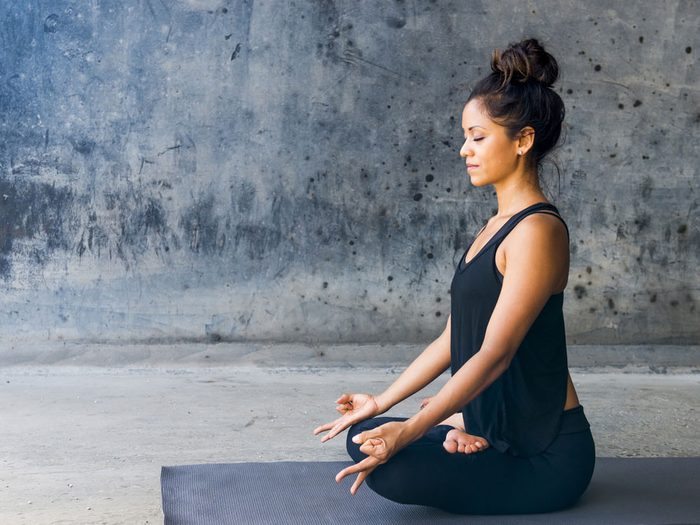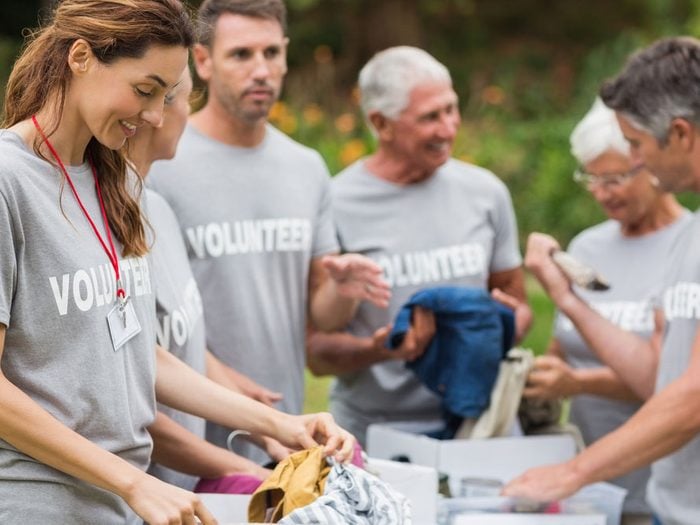The key to happiness
Many of us go to great lengths in search of joy, but the reality is, it lies close to home – usually deep within. In fact, the key to your happiness could be as simple as embracing who you are. As the late comedienne Lucille Ball once said: “Love yourself first and everything else falls into line.”
Not comfortable putting yourself first? Then perhaps you’ll find joy in giving back to society. According to Gandhi: “The best way to find yourself is to lose yourself in the service of others.”
The bottom line is, there are many routes to happiness, you just need to find the right one. For a lucky few, the ability to lead a joy-filled life is an accident of genetics. But for the bulk of us, it takes conscious effort. Happiness doesn’t just happen – like anything we want in life, we have to work for it.
The good news is that we have a lot of control over the thoughts and actions that can crank up the joy dial in our lives. And it’s worth making the effort to increase the volume – joy is what gives life meaning, helps us through the rough spots, inspires us to do wonderful things and brings inner peace.
When did you last jump for joy, literally or figuratively? Maybe the time has come to make the leap to a life that feels more abundant with delight. You may be pleasantly surprised to learn that by rekindling a single quality that you’ve lost touch with, you can reawaken happiness.
So, what qualities make the cut? Here are our top six picks, complete with stories from real women who learned how to get their bliss on.
Gratitude: Make it an active practice
How it’s linked to joy: Practising gratitude invites more joy into our lives. “When we choose not to focus on what is missing from our lives but are grateful for the abundance that is present, we experience heaven on earth,” says inspirational writer Sarah Ban Breathnach. For Karen Graham, a 56-year-old success coach and counsellor in Barrie, ON, being consciously grateful helps her cope with bouts of seasonal affective disorder. “I find I’m more likely to experience joy if I’m content with what I have,” she says.
How we lose it: We often feel dissatisfied when we compare our lives to others and imagine theirs is so much better, says Graham, who cites this favourite quote from Theodore Roosevelt as a reminder not to do that: “Comparison is the thief of joy.”
How to reclaim it: A tangible gratitude practice -keeping a gratitude journal or saying grace at dinner that includes what you are thankful for – can shift your mood from blue to blissful. Every night before nodding off, Graham tries to remember to recount three things she was thankful for that day. “Some are big, like my health or my home, and others are small, like basmati rice.” And, because she’s “more likely to feel gratitude when she’s outdoors,” she makes sure to take her yellow lab, Hailey, for a walk in the woods every day. “Nature is a spiritual place and the forest is my cathedral. When I’m feeling connected to the universe, I’m always in a grateful place.”
Authenticity: Rediscover who you are
How it’s linked to joy: “The privilege of a lifetime is to become who you truly are,” wrote Carl Jung. Authenticity means having the self-awareness to understand what really brings you happiness – only then will you be able to discover your life’s purpose and pursue it with passion.
That’s what Dr. Cathy Klein did when she gave up a high-profile, high-paying career as a head soccer coach at a prestigious U.S. university to pursue her passion of teaching by creating a developmental training program. That was over 10 years ago, and she’s never looked back. “I followed my passion and found my joy – which involves working with kids and dogs – and rebuilt my life. I used to have a six-figure income and a big expense account. Now I live in a small cottage in the country and have a minimalist lifestyle,” says 50-year-old Dr. Klein, of Carlisle, ON. “I peeled away the layers to find out who I really am and I’ve never been happier.”
How we lose it: When we always strive to please others – or become hooked on achievement – we can lose sight of our true selves. Dr. Klein spent decades proving herself before realizing it wasn’t making her happy. “I got to the highest level of women’s soccer there is and it was like chasing air – there was always something else I felt I had to accomplish.”
“I became defined by being on a national team, having a top athletic career and getting a PhD. I bought into a measure of success that was defined by what others wanted for me. Now I make the effort each and every day to ask myself what really brings me joy.”
How to reclaim it: Sometimes it’s a big event that makes us realize we aren’t living our right life. For Dr. Klein, the wake-up call came when her father was diagnosed with terminal brain cancer. She returned home to help care for him and began to reassess her life. “That’s what started my real transformation.”
Self-acceptance: Embrace who you are
How it’s linked to joy: Lucille Ball said it simply and said it best: “Love yourself first and everything else falls into line.” But many women live in self-imposed misery because the critical voice in their head tells them they aren’t good enough, says 43-year-old Christine Ciona, a “joy guru and abundant living guide” in Swift Current, SK, who coaches clients to stop judging and laying guilt on themselves. “So many people say they are doing just fine, but deep inside they are miserable and don’t know why. It’s because they get out of alignment with their true being.”
How we lose it: Self-acceptance is hampered “when we listen to our self-doubt and say things to ourselves that deplete us,” says Ciona, who adds that maintaining a harried schedule with little to no downtime is another way to avoid accepting ourselves. “Engaging in overactivity can be a way of numbing ourselves and not connecting with who we are inside.”
How to reclaim it: Take the time to be still, says Ciona, who operates a studio that allows clients to do just that with classes in meditation and tai chi and also offers a 10-day summer reiki and slow yoga retreat in Spain. For Ciona, finding her “joy champions,” an intimate circle of “soul sisters,” has been key to living a better life.
“Think about the people in your life who inspire you and figure out what you can learn from them – they can help you raise your joy frequency,” she says. “Recently I met a woman and, although I didn’t really know her, I loved her vibe and told her I’d love to connect with her once a month over coffee. Be brave and reach out.”
Fearlessness: Have the guts to go for it
How it’s linked to joy: “There are only a few people out there who can completely overcome their fears – and they all live in Tibet,” writes Susan Cain in Quiet: The Power of Introverts in a World That Can’t Stop Talking. While only the most mindful of Buddhist monks may be able to completely experience freedom from fears, the rest of us have to learn to face them.
But when we do, the payoff can be big, says 57-year-old Janet Webber of Halifax, NS, who embraced fearlessness in her own life by leaving an unhappy marriage over a decade ago and launching her business as a love and relationship coach in 2009.
“It takes a lot of courage to get divorced, and it also takes a lot of courage to be an entrepreneur,” she says. “But today I am living my dream. I love my work – I believe I was born to do this.”
How we lose it: Many of us are motivated by negative emotions, which rob us of the potential for joy. “Overwhelmingly, in my practice I see people who are doing things or who are in relationships where the underlying motivation is fear, obligation or guilt,” says Webber. “If we are always sacrificing our own needs for the needs of others, we abandon ourselves. It takes a lot of fearlessness to call into question what we
are doing.”
How to reclaim it: Set healthy boundaries and put yourself first for a change. “We have to be able to look at our lives from a more objective place and call into question what is really motivating us,” says Webber. “The world needs more people who are connected to their joy. We don’t need more people drudging through life with endless to-do lists and no energy left for themselves.”
Giving back: Reap the rewards of sharing
How it’s linked to joy: Gandhi said, “The best way to find yourself is to lose yourself in the service of others.” Plenty of studies bear this out, including the 2010 Do Good Live Well Survey of 4,500 adults by United Healthcare and Volunteer Match that found that, of those who volunteer, 89 percent said it improved their sense of well-being, 73 percent said it lowered their stress levels and 68 percent said it made them feel physically healthier.
Giving back has always been a big part of Patricia Gagic’s life. The 61-year-old Hamilton, ON, writer and artist has spent many years volunteering for organizations such as the John Howard Society and Free the Children. But a significant turning point came when Gagic’s friend visited Cambodia in 2006 and stumbled upon a derelict orphanage housing anywhere from 30 to 40 children at a time. Gagic and her surgeon husband, Ned, first visited the region of Siem Reap in 2007. The Gagics provided all of the funds to build a new library and school for the children and the monks who cared for them, and they continue to fund this cause. “It made a huge difference not only in their lives but also in ours,” she says. “People want to feel joy in their lives, and the way to do that is to know what brings you fulfillment – for me, that’s finding a way to contribute.”
How we lose it: We can become so focused on our own concerns that we forget there are many who could benefit from our help. “Think about what’s preventing you from contributing. If you don’t have the money, perhaps you can afford to invest some time,” suggests Gagic. “We can forget that extending a hand to someone else can give us a sense of completeness.”
How to reclaim it: Gagic acknowledges that her financial means allowed her to donate a substantial amount of money to the orphanage but points out that a contribution doesn’t have to be big to be meaningful. “Even if you are doing something as simple as knitting mittens for needy kids, you are making an impact,” she says. “Helping others is what we are here for.”
Healthy living: Take care of yourself
How it’s linked to joy: “The first wealth is health,” wrote Ralph Waldo Emerson. By that measure, Janet Lansigan, who passionately pursues a life of “clean living,” is a wealthy woman indeed. Everything she buys – from food to makeup to household products – is organic. She’s so committed to good nutrition that she went back to school at age 47 for two years to become a registered holistic nutritionist in Vancouver, and is currently enrolled in a course to become a certified raw-food chef.
“For me, feeling joyous means nourishing my body in a healthy way,” says Lansigan, who also does a moksha hot yoga class and a 21/2 hour guided meditation every week.
How we lose it: Lansigan’s wake-up call to take better care of her health came when her father died of liver cancer in 1996. Her mother committed suicide three years later, still unable to cope with the death of her husband.
Months after the loss of her parents, she recommitted to a healthy lifestyle. “People lose sight of themselves and focus on their emotional pain or the stress of their job. They just mindlessly eat and run and don’t think about self-care.”
How to reclaim it: Lansigan’s recipe is simple: “First, eat real food. Then, move. Then, look inside to consider what really brings you joy – and just do it.”







